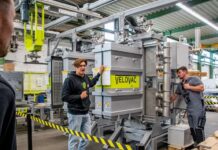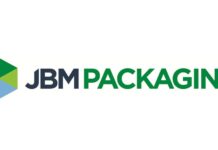Gauge if automation is suitable for packaging operation!
Automation has emerged as a notable solution to address the pervasive labour issues that businesses are currently grappling with. Packaging executives have observed its potential to alleviate this ongoing problem, which affects almost every industry.
Unfortunately, companies frequently struggle to look beyond their initial price tag. They don’t recognise that the initial expenditure yields long-term benefits that continue to pay off over time.
Companies may find it difficult to make a larger initial investment while attempting to maintain flexibility as well as preserve spending, especially with the possibility of a recession. However, when working with a reliable equipment expert, automation investments can be executed with precision and ease, guaranteeing that the equipment delivers the promised results.
Using automated packaging solutions – Advantages to businesses and employees
Investing in the appropriate automation can result in highly efficient and effective packaging, spanning from the initial idea to the manufacturing line and eventually reaching the market.
Businesses as well as their packaging partners must work together to identify inefficiencies that can lead to time and cost savings. By thoroughly analysing every aspect, packaging production managers have the ability to enhance speed to market by means of automation of operations, decrease in labour, minimization of damage, and optimisation of workflow.
When faced with a labour issue, such as difficulty locating employees to fold boxes, the most effective solution is to employ equipment to automate the process. As a business continues to expand and faces limitations in warehouse space, the installation of automated equipment by packaging specialists can help reduce the footprint of the manufacturing line. Automation offers businesses the opportunity to improve their operations by implementing high-quality packaging solutions while simultaneously enhancing employee safety.
Reasons behind reporting of packaging damage and increased costs
Failures in load containment lead to breakage and damage. One possible solution is to wrap the load multiple times. However, these factors result in higher material costs, ineffectiveness in labour, and increased waste for downstream supply chain partners. A secure wrap analysis assists businesses in optimising safety and cost savings by successfully integrating appropriate materials, equipment, and standards.
The construction of the primary pack, pallet layout, as well as warehouse environment are frequently disregarded factors that contribute to the overall structural integrity of units as well as loads.
Contribution of automation to sustainable packaging initiatives
It is necessary to assess the environmental impact of all technologies and materials, and automation can help customers achieve their sustainability goals by allowing businesses to operate with greater efficiency. Machines contribute to a decrease in the amount of wasted material.
When engaging in discussions about business goals with customers, sustainability is often their top priority. Taking a holistic approach is crucial when thinking about design and materials. Additionally, it is important to explore methods of automating vital procedures in order to enhance efficiency, reduce expenses, and promote sustainability initiatives. Analysing the effective utilisation of materials is crucial for protecting products during transit, reducing waste, and accomplishing sustainability goals.
Advancement of environmental sustainability in the future
One can witness the emergence of more innovative methods for automating the collection of recyclable and renewable materials. For instance, on a daily basis, the team assesses fresh and creative sustainable materials that can be utilised in packaging for our customers. Finding supply chain partners who actively work to achieve sustainability goals is crucial.



























